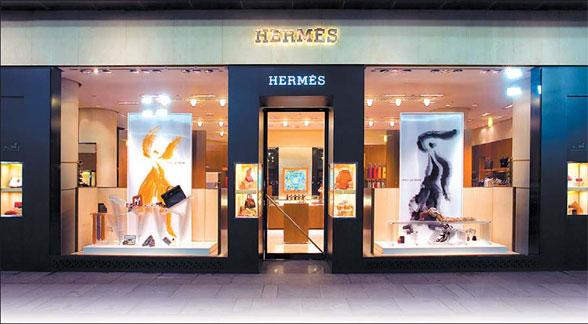
This year Hermes has three anniversaries to mark - its 170th birthday as a French luxury brand, the 70th year since it made its first scarf and its first decade in mainland market.
Although it usually takes a low-profile marketing approach, Hermes kicked off campaigns in Shanghai late last month, enlarging its Shanghai boutique at Plaza 66, its biggest on the mainland, and opening a month-long Hermes scarf exhibition at the ShanghaiArt Museum.
The company plans to open four stores this year and beginning next year will develop three to four outlets annually, says Leo Lui, president of Hermes China.
Lui was appointed to the position last September after joining the firm in Paris last May. The Hong Kong-born Chinese, who graduated with an MBA from HEC School of Management in Paris, has 24 years of professional experience in the fashion and luxury industries, working with L'Oreal, Moet Hennessy and Louis Vuitton in France, Hong Kong, Taiwan and on the Chinese mainland.
Lui says Hermes has been expanding in stages in China through "very strong double-digit growth" in the past two years. He declined to reveal exact figures.
"China is still small for Hermes," Lui says. "The sector is under development. In five years time, it will be one of the top-five for us." Japan, France and the United States are currently its main markets.
Hermes has over 280 outlets in nearly 40 countries. Since opening its first boutique on the mainland at Beijing's Peninsula Palace Hotel in 1997, it now has eight stores in Beijing, Shanghai, Guangzhou, Tianjin, Dalian of Northeast China's LiaoningProvince and Hangzhou, capital of East China's ZhejiangProvince.
The Tianjin store is a shop-in-a-shop opened in February in partnership with department store Isetan. In Japan, the Paris-based firm has had a long-term relationship with Isetan, and it chose the same approach in that mainland city.
"If it works, we are open to such partnerships in the near future," Lui says.
Other than the Tianjin shop, Hermes wholly owns its other seven stores.
"We make the direct investment here since it enables us to better control management and customer service in particular," Lui says.
In addition to expansion, Lui also focuses on creating a good environment for employees.
He proudly notes that in the first four months of the year, the company had zero turnover in its staff. He believes human resources are the most important asset for a company.
In China's luxury sector, staff turnover in sales and marketing is frequent. As more new brands arrive and more new shopping malls are opened, companies want to recruit experienced people.
Hermes has 14 types of products, including ready-to-wear, leather goods and silk scarves and ties. China is different from mature markets where leather goods normally sell the best.
This could be due to the development of the Chinese luxury market, which started mostly with men about 10 years ago who wanted to demonstrate their success by wearing expensive suits and watches, Lui explains.
But Hermes has seen leather goods and silk scarves and ties are catching up, as an increasing number of women have started to buy Hermes products like Kelly and Birkin handbags.
"We want to communicate with the local customers the richness of our 14 departments of products," Lui stresses.
The president says Hermes does not consider itself a luxury brand, but rather offering products made by craftsmen using the best natural material, the most skillful craftsmanship and the best methods of production to create a useful item that can last for generations.
With that philosophy, the company targets two types of customers - entrepreneurs who own their own businesses, and look for high quality, and young professionals working for multinational companies, who want to show that they have good taste.
To meet customer demand, Hermes offers products across a wide price range, from 1,000 yuan perfume to a diamond leather bag priced at 1.6 million yuan.
This year the company worked with the Chinese contemporary artist Ding Yi, who designed a scarf called The Rhythm of China that is printed with a number of small colorful checks.
Hermes Artistic Director Pierre-Alexis Dumas says he was dumbfounded when he received the design, adding that it will be central to the Hermes scarf exhibition in Shanghai.





